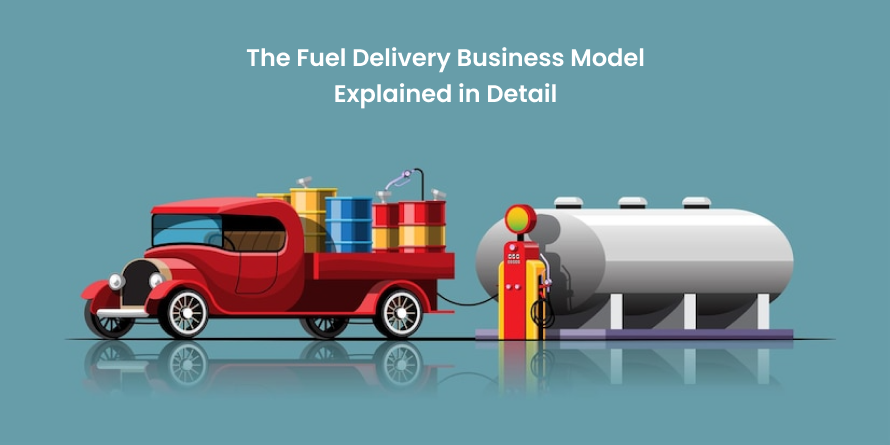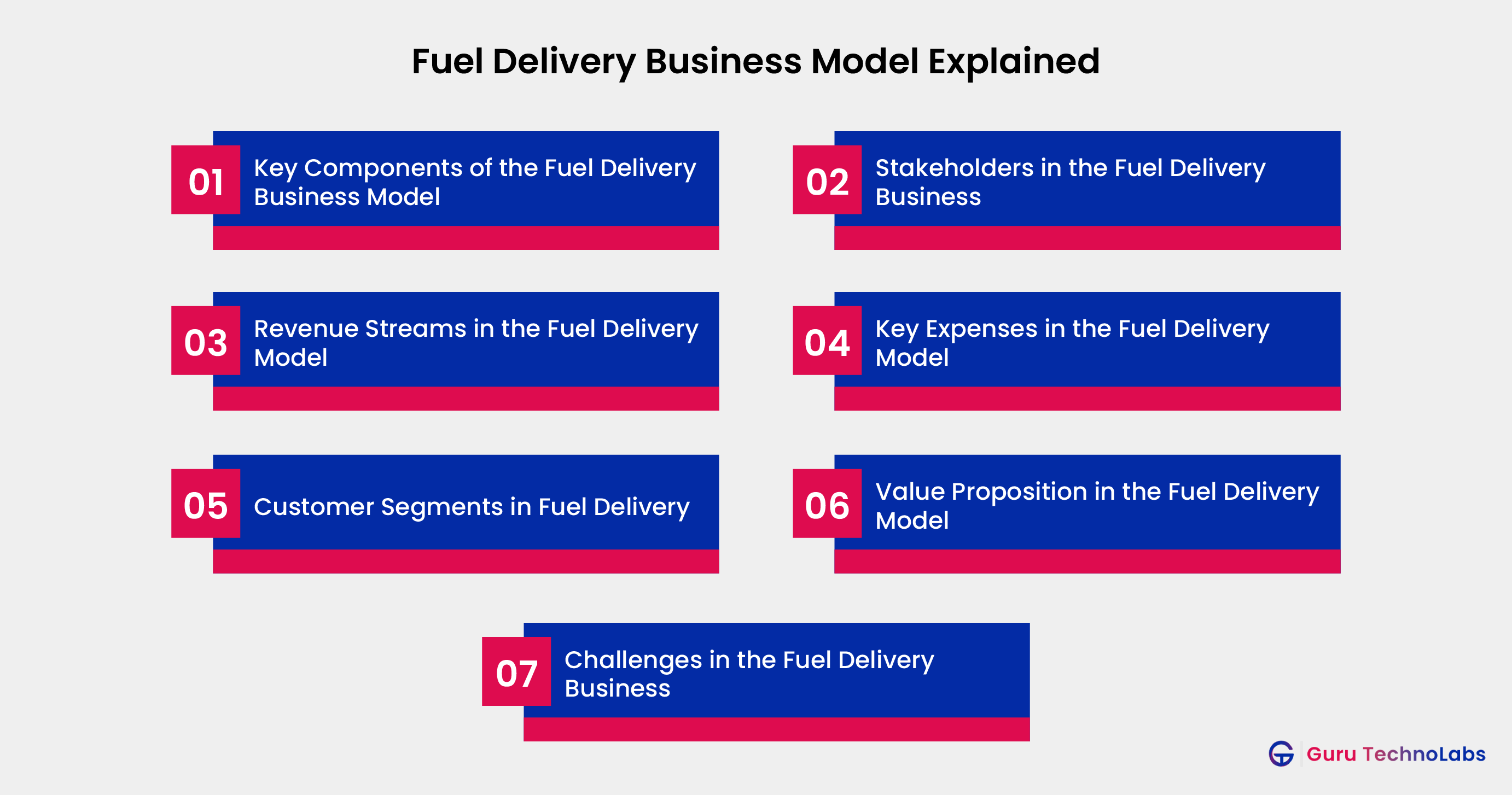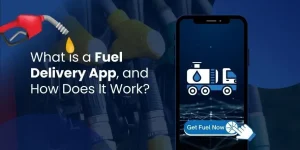The Fuel Delivery Business Model Explained in Detail

The on-demand economy is exponentially booming. Fuel delivery platforms are performing exceptionally well by offering extreme convenience and ease to customers. So, if you plan to start an on-demand fuel delivery business, this is the right time to take a plunge.
According to the ongoing statistics, the on-demand fuel delivery market is projected to grow as high as $5.4 billion in 2024 and reach $8.9 billion by 2031. Also, some reports revealed that different fuel delivery apps captured more than 10% of the fuel sales during the pandemic.
Indubitably, the coronavirus pandemic accelerated the hypergrowth of online fuel delivery services. However, its success is due to modern fuel technological advancements and the recent proliferation of different fuel delivery models and types. All this boosts the delivery economy and makes entrepreneurs inclined towards the online fuel delivery market.
Fuel Delivery Business Model Explained

The fuel delivery business model is evolving quickly in today’s changing business era. This model ensures that gas stations, petrol pumps, and other businesses involved in fuel distribution have a steady and reliable fuel supply.
By understanding this model’s core components, stakeholders, and revenue-generation tactics, you can make informed business decisions for your fuel business.
1. Key Components of the Fuel Delivery Business Model
Fuel delivery services are built upon a few critical components, such as:
- Logistics Network: Efficient transport systems, including tankers and delivery trucks, play a pivotal role in ensuring timely delivery to fuel stations.
- Storage Facilities: Bulk storage tanks at strategic locations that hold fuel before distribution.
- Fuel Suppliers: Companies that manufacture and refine fuel, partnering with distributors to provide a steady supply.
- Technology Integration: Tracking systems for fuel management, delivery scheduling, and inventory management to ensure smooth operations.
2. Stakeholders in the Fuel Delivery Business
The fuel delivery ecosystem involves several key stakeholders who interact and depend on one another:
- Fuel Suppliers: Refineries or manufacturers that produce and supply fuel to distributors.
- Distributors: Companies responsible for transporting and delivering fuel to gas stations.
- Gas Station Owners: B2B clients who operate the stations, retailing fuel to end customers.
- Regulatory Authorities: Government entities that regulate fuel distribution, safety standards, and environmental impact.
- Logistics Providers: Transport companies or fleet operators that ensure safe and timely fuel delivery.
3. Revenue Streams in the Fuel Delivery Model
Fuel delivery businesses generate revenue through various channels:
- Delivery Charges: Fees charged for transporting fuel to gas stations.
- Fuel Markup: A markup on the fuel price charged to gas station owners to cover delivery and operational costs.
- Storage Fees: For businesses that offer storage solutions to gas stations that may not have large enough facilities.
- Subscription Models: Regular customers or long-term contracts can lead to consistent, subscription-based income.
4. Key Expenses in the Fuel Delivery Model
Running a fuel delivery service involves several fixed and variable costs:
- Fuel Costs: Purchasing fuel from suppliers at wholesale rates.
- Transportation Costs: Expenses related to maintaining fleets of delivery trucks or vehicles.
- Storage and Infrastructure: Maintenance of storage tanks, warehouses, and facilities for fuel holding.
- Labor Costs: Salaries for delivery drivers, warehouse personnel, and customer service teams.
- Insurance: Coverage for risks associated with fuel transport, accidents, and environmental hazards.
5. Customer Segments in Fuel Delivery
Fuel delivery services cater to a diverse range of customers, including:
- Gas Stations and Petrol Pumps: Businesses require a constant fuel supply.
- Industrial Clients: Manufacturing, construction, or transportation companies that require bulk fuel for machinery and equipment.
- Government Contracts: Military and public-sector entities that need reliable fuel delivery for fleet operations.
- Private Enterprises: Large corporations and businesses with a fleet of vehicles that require regular refuelling.
6. Value Proposition in the Fuel Delivery Model
The value proposition for gas station owners and other clients in the fuel delivery business is clear:
- Reliable Supply: Consistent and timely fuel delivery ensures operations run smoothly without interruptions.
- Cost Efficiency: Competitive pricing on bulk fuel purchases and reduced transportation costs for business owners.
- Convenience: Simplified logistics and reduced need for in-house storage or management of fuel.
- Safety and Compliance: Ensure all deliveries comply with safety regulations, reducing risk.
7. Challenges in the Fuel Delivery Business
Like any industry, fuel delivery faces certain hurdles:
- Volatility in Fuel Prices: Fluctuating fuel prices can impact the profit margins for both suppliers and distributors.
- Logistical Complexities: Managing timely deliveries across a wide geographical area can be challenging.
- Regulatory Compliance: Staying up-to-date with environmental and safety regulations is constantly required.
- Fuel Theft and Loss Prevention: Addressing issues related to fuel theft during transportation.
By understanding these core elements, gas station owners and operators can make more informed decisions about partnering with fuel delivery businesses, improving their supply chain efficiency, and ensuring business continuity.
Check out more in details what challenges do fuel business owner faces.
Required Resources & Technologies to Implement the Fuel Delivery Business Model
To start with, the fuel delivery business model requires specific resources and technologies.
- 1. First and very basic, entrepreneurs need to develop a mobile app or website through which customers can place orders and know the company’s whereabouts.
- 2. Secondly, businesses need a reliable and feature-rich delivery system with real-time notifications to ensure that orders are delivered on time.
- 3. Third, gas stations should also have a robust payment system to accept online customer payments for online orders.
Key Takeaways
Launching an online fuel delivery business requires a detailed business plan and serious endeavours. You also must acknowledge that you are setting up in one of the market’s most crowded but lucrative sectors. Below is a simplified list to show you what you need to start an online fuel delivery business:
- Fully functional app with modern features
- A responsive website
- Necessary legal documents and permission
- Professional (HAZMAT) truck drivers
- Collaboration with fuel suppliers and gas stations
In short, launching a fuel delivery business is not a cakewalk. One has to overcome many challenges and barriers, but collaborating with an experienced app development company can help you overcome these challenges with robust digital solutions. If you want to develop a user-friendly fuel delivery app, contact us, and we will help you launch and scale your fuel delivery operations smartly.



















